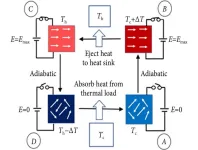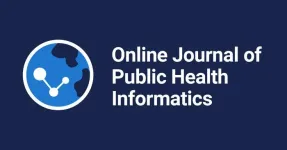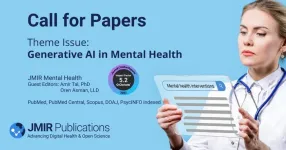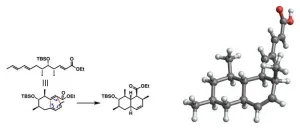Simultaneous synthesis and fixing of covalent organic frameworks
2023-07-19
(Press-News.org) Covalent organic frameworks (COFs) are versatile materials composed of interconnected organic molecules held together by covalent bonds. These frameworks can be constructed in two-dimensional or three-dimensional (3D) forms which possess a unique combination of low density, high surface area, and easily tunable properties. Among the various types of COFs, imine-linked COFs have garnered considerable attention owing to their exceptional thermal and chemical stability as well as their broad scope of monomeric starting materials.
However, traditional bulk synthetic methods for COFs often yield powders that are insoluble in common organic solvents, posing challenges during their subsequent molding and fixing on substrates. While alternative fabrication approaches, such as exfoliation of bulk COFs into nanosheets, employment of novel interfaces, and use of templates for freestanding films, overcome this limitation, they usually involve multiple steps and produce low-quality COF structures.
Recently, a team of researchers from Japan, led by Professor Shinsuke Inagi from Tokyo Institute of Technology (Tokyo Tech), has developed a novel method for synthesizing and fixing high-quality imine-based COFs. Their work was made available online on 9 June 2023 and published as “Hot Paper” in the Angewandte Chemie International Edition journal.
“The proposed method utilizes an electrogenerated acid (EGA), produced via electrochemical oxidation of 1,2-diphenylhydrazine (DPH) in an organic electrolytic solution, as a catalyst for COF synthesis and immobilization onto electrode surfaces. It acts as a strong Brønsted acid, promoting the condensation reaction between amine and aldehyde monomers—the building blocks of imine-based COFs—to form covalent bond networks,” explains Prof. Inagi.
The team chose DPH as the EGA source due to its low oxidation potential and acid-releasing properties and used 1,3,5-tris(4-aminophenyl)benzene (TAPB) and terephthalaldehyde (PDA). By employing the potential-sweep method for electrolysis, they successfully obtained film-like COF deposits on indium tin oxide electrodes immersed in nitromethane. The TAPB–PDA COF films possessed high crystallinity and porosity. In addition, their thickness could be controlled by modulating the electrolysis time.
The researchers also extended their electrochemistry-based approach to the synthesis of other structures, including triazine-based and 3D COFs.
In conclusion, Prof. Inagi highlights the future potential of the proposed method. “It eliminates the need for long reaction times, high temperatures, and Lewis acid catalysts typically required in conventional COF synthesis, making it environment friendly,” he highlights. “Moreover, the direct fixing of COF films onto electrodes is promising for COF-based applications, especially in functional modified electrodes and sensing materials.”
We certainly hope that this innovative and sustainable synthesis approach will lead to many more novel functional materials!
END
[Attachments] See images for this press release:

ELSE PRESS RELEASES FROM THIS DATE:
2023-07-19
As necessary as cooling technologies are, we’re still operating on an outdated technology that can be considered a significant contributor to global warming and greenhouse gas emissions. Currently, vapor compression cycle-based cooling (VCC) is the standard for reliable cooling of air conditioning and refrigeration, but by switching to electrocaloric cooling (EC) researchers are hoping to create a more environmentally friendly, scalable and compressor-free method of cooling to benefit businesses, families and the environment.
The researchers published their work in iEnergy on ...
2023-07-19
(Toronto July 19, 2023) Fully open access publisher JMIR Publications has acquired the Online Journal of Public Health Informatics (OJPHI), expanding its portfolio to 35 gold open access journals. This acquisition marks an open access milestone in JMIR Publications’ continued mission to keep openness at the heart of what it does.
Indexed in PubMed Central, OJPHI has been delivering the latest developments in the emerging field of public health informatics since 2009. The journal publishes research articles, book reviews, technology reviews, working papers, interviews, commentaries, and handpicked student capstone projects.
All ...
2023-07-19
JMIR Medical Education (2023 Impact Factor 5.2) and Guest Editors: Amir Tal, PhD, and Oren Asman, LLD welcome submissions to a special theme issue examining "Responsible Design, Integration, and Use of Generative AI in Mental Health"
This special theme issue aims to unite various stakeholders in exploring the responsible use of generative artificial intelligence (GAI) within the mental health domain. The goal is to curate a collection of articles that examine the advantages, challenges, and potential risks associated with deploying GAI models ...
2023-07-19
Prof Sei-ichi Tsujimura of the Nagoya City University and Prof Su-Ling Yeh of National Taiwan University and Kagoshima University, have discovered that our visual acuity (contrast sensitivity) can be improved by using a light with a special spectrum that can selectively stimulate melanopsin cells in the retina.
Background
The retina of our eye contains cone photoreceptor cells, which identify colors in bright environment, and rod photoreceptor cells, which work in the dark. It has long been thought that humans see and identify objects by these two types of photoreceptor cells alone. ...
2023-07-19
Intermittent rivers and ephemeral streams are the world's dominant river ecosystem, yet monitoring and management typically focus on rivers that flow year round. Writing in BioScience, Amélie Truchy of the French National Research Institute for Agriculture, Food, and the Environment (INRAE) and colleagues describe the problem, as well as a potential solution: citizen science.
The authors discuss the results from a new app, DRYRivERS, which allows scientist and nonscientist users alike to record data on ephemeral streams and intermittent ...
2023-07-19
For millions of Americans who have heart surgery or experience cardiovascular complications, like heart attack or heart failure, they may be encouraged to participate in cardiac rehabilitation. The medically supervised program combines lifestyle changes, education and physical activity to help patients recover and reduce their risk of future problems.
A Michigan Medicine study now finds that people who participate in cardiac rehabilitation have a decreased risk of death years after surgery, with a trend towards better outcomes in patients who attend more sessions.
“Time and time again, cardiac rehabilitation has been shown to ...
2023-07-19
As life expectancy increases worldwide, age-associated diseases such as osteoporosis are having an increasing impact. Although early detection could help physicians intervene as soon as possible — when treatment might offer the greatest benefit — this type of detection is not yet possible with current osteoporosis diagnostic tests. Now, researchers reporting in ACS Central Science have developed a biosensor that could someday help identify those most at risk for osteoporosis using less than a drop of blood.
Early intervention is critical to reducing the morbidity and mortality associated with osteoporosis, a condition characterized by an elevated ...
2023-07-19
Whether enjoyed on its own or mixed into a latte, Americano or even a martini, espresso provides an ultra-concentrated jolt of caffeine to coffee lovers. But it might do more than just wake you up. Research now published in ACS’ Journal of Agricultural and Food Chemistry shows that, in preliminary in vitro laboratory tests, espresso compounds can inhibit tau protein aggregation — a process that is believed to be involved in the onset of Alzheimer’s disease.
Roughly half of all Americans drink coffee every day, and espresso is a popular way to consume ...
2023-07-19
Almost everyone has a bag of veggies shoved into the dark recesses of their freezer that’s now essentially an unrecognizable block of ice crystals. And when thawed, foods damaged by excessive ice lose their texture and become mushy. Now, researchers reporting in ACS’ Journal of Agricultural and Food Chemistry have shown that broken-down soy proteins can prevent ice crystal growth and could be especially useful for preserving frozen vegan foods or biological samples.
Some animals that ...
2023-07-19
The discovery of antibiotics in 1928 was a major turning point in the history of medicine. For the first time since the dawn of human civilization, doctors had gained access to an extremely powerful and effective tool to fight against a wide variety of bacterial infections. Today, bacterial diseases that were previously a death sentence can be cured, and infections following surgery or chemotherapy can be prevented or treated more effectively.
Unfortunately, the worldwide use (and abuse) of antibiotics led to the emergence of drug-resistant bacterial strains. Over time, bacteria that could normally be killed by ...
LAST 30 PRESS RELEASES:
[Press-News.org] Simultaneous synthesis and fixing of covalent organic frameworks






